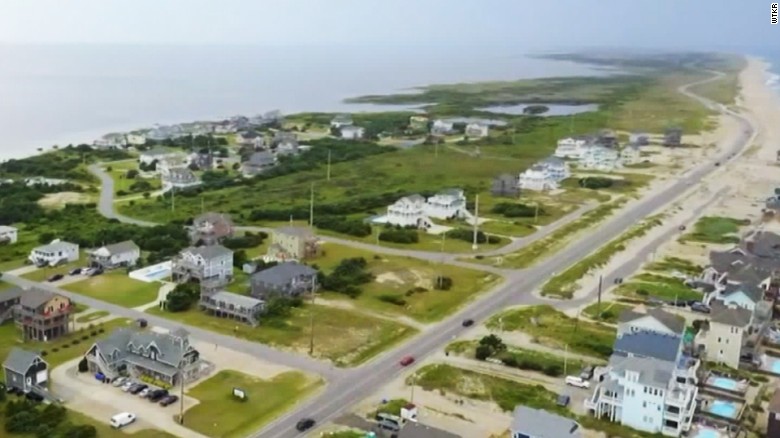Normally, this month is in the sweet spot for tourism in North Carolina’s famed Outer Banks.
But instead of welcoming visitors who tote bright umbrellas and sand buckets to the beach, Janet Dawson had her 37-room motel in Buxton to herself on Monday, the fifth day of a massive power outage that has brought tourism to a virtual standstill on Hatteras and Ocracoke islands.
An emotional Dawson was particularly worried after utility officials late Sunday said repairs to power cables damaged last week could take between one to two weeks.
“People make money in summer to live through the winter,” said Dawson, who operates the Cape Hatteras Motel. She’s had to refund all of the motel’s reservations, and has already lost tens of thousands of dollars.
“Two weeks would put us out of business, two weeks is beyond the pale … I think we could limp along, but we would run out of money and would have to close some time in winter.”
Some might wish the weather along the Atlantic Ocean this week would match the dour mood. That’s not the case.
The forecast for the next couple days calls for mostly sunny skies, with highs in the mid- to low 80s, and winds of about 17 miles per hour.
What they’re doing to fix the problem
Residents have been in the dark since Thursday morning, when a crew working for PCL Construction, the company building the new Herbert C. Bonner Bridge at Oregon Inlet, accidentally drove a steel casing into an underground transmission line.
Thet mishap cut off power from that point south to Ocracoke, the southern terminus of the Outer Banks, a string of barrier islands spanning most of North Carolina’s northern coast.
Since then, thousands of visitors were ordered to evacuate. Businesses and residents are tapping into a growing number of generators. They were asked to curtail the use of air conditioning.
The more moderate temperatures going into the week heartened Ocracoke residents: Load on generators was so low they could have unrestricted use of air conditioning and appliances on Monday.
There was some more good news. Cape Hatteras Electric Cooperative said only two of three underground transmission cables were damaged. And the utility was trying two ways to restore power.
The first is to excavate down to the damaged cables and then splice them. Splicing on the first damaged cable was complete.
“Installation efforts began early this morning on the second solution — building a new overhead transmission line that will run from the south end of the Bonner Bridge to meet the cooperative’s existing overhead transmission line,” the utility said.
Tough time for tourism, residents
The endless stretches of beaches on Ocracoke and Hatteras should have been packed with tourists from all over the country, trying to catch the sun’s rays and splash in the surf before summer ends.
Angela Conner Tawes, manager of Conner’s Supermarket, a third-generation grocery store in Buxton, said missing two weeks is “a huge deal” for the business.
“This is unusual,” Tawes said. “We usually face such situations following a hurricane, when we are dealing with the cleanup after the storm … it’s a bad situation, we just have to get through it.”
Dawson said a group of local businesses is looking at legal action to recoup losses.
Dare County public information officer Dorothy Hester said that about 50,000 to 60,000 people — both residents and visitors — had been in beach areas before the evacuations.
Dare County Emergency Services maintained that the “mandatory evacuation remains in place,” and had not set a date by which tourists could begin returning to Hatteras Island.
Nearly 470 campsites were closed at Cape Hatteras National Seashore. The signature lighthouse and facilities at Cape Hatteras remained open, though, thanks to three generators. Only a trickle of visitors climbed the steps on Sunday, said Mike Henry, deputy chief ranger.
“It feels like the offseason,” Henry said.
Pea Island National Wildlife Refuge, just below Oregon Inlet, is open, but only local bird watchers and nature lovers are allowed. Officials hope the visitor center will reopen Wednesday after a generator is put into action.
In the meantime, volunteers are keeping a watchful eye at night on loggerhead turtle nests, said Bonnie Strawser, visitor services manager. Hatching season is imminent, and thousands of tiny turtles will race for the surf. “We try not to touch them,” said Strawser.
If the turtles head the wrong way, volunteers can employ red lamps to draw them closer to the ocean or try to block residential and street lights that might confuse them.
Unfortunately for visitors and people who depend on them for a living, there are fewer lights flickering along the seashore.



